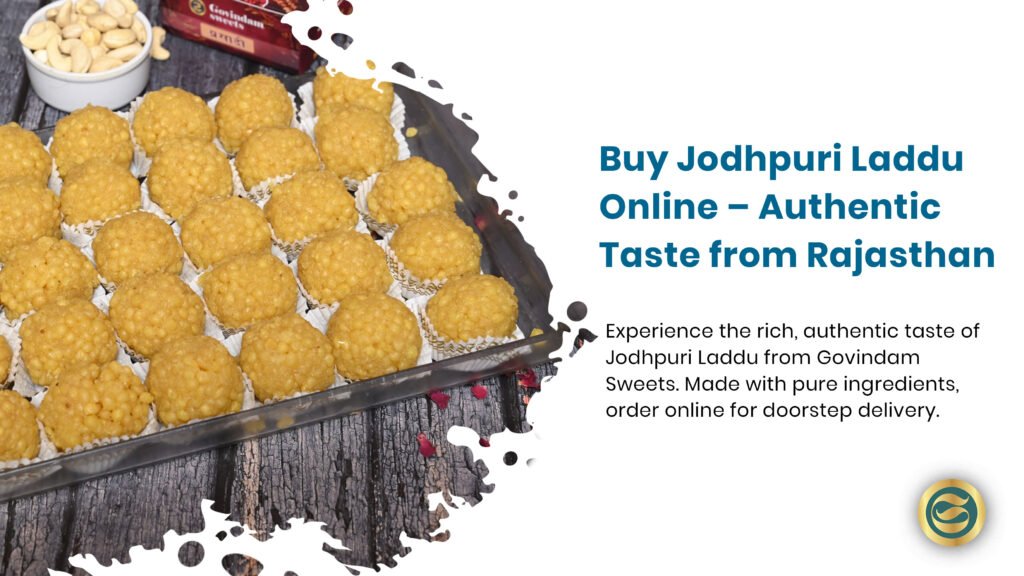
Posts
Savor Ahmedabad Famous Sweets Online Govindam Gujarat Traditions

Explore Ahmedabad’s Famous Sweets Online traditions and Gujarati confectionery heritage including iconic preparations, regional characteristics, cultural significance, quality indicators, and how online platforms connect consumers nationwide to authentic regional specialties. Discover distinctive preparations while understanding regional expertise and authentic sourcing for genuine experiences.
Savor Ahmedabad’s Famous Sweets Online: Now Online at Govindam
Introduction: Discovering Famous Sweets Online Gujarat’s Confectionery Capital
Ahmedabad, Gujarat’s largest city and historic commercial hub, carries proud sweet-making traditions reflecting broader Gujarati culinary character through distinctive preparations that generations have perfected and contemporary consumers increasingly seek accessing beyond traditional geographic boundaries. This western Indian metropolis, historically prominent through textile trade, entrepreneurial dynamism, and cultural sophistication, developed confectionery excellence paralleling commercial prosperity—where merchant community wealth enabled premium ingredient access, cosmopolitan exposure brought diverse influences, and cultural pride maintained traditional preparation standards that define regional identity. The famous Ahmedabad sweets including mohanthal’s rich gram flour base, ghughra’s festive associations, and various regional specialties demonstrate Gujarat’s distinctive culinary aesthetic emphasizing refined sweetness, subtle spicing, and quality ingredients creating preparations that enthusiasts recognize immediately as Gujarati character rather than generic pan-Indian sweets lacking regional distinctiveness.
Understanding Ahmedabad’s sweet heritage requires appreciating how regional geography, cultural values, religious traditions, and economic prosperity collectively shaped culinary evolution creating distinctive character within India’s remarkably diverse confectionery landscape. The Gujarati cultural emphasis on vegetarianism, religious observance, and family-centered celebrations created particular sweet consumption contexts where preparations served devotional, social, and celebratory functions with cultural meanings transcending pure taste pleasure. The Jain community’s significant presence particularly in Ahmedabad influenced preparation methods avoiding root vegetables, garlic, and onions while maintaining elaborate flavor development through permitted ingredients and techniques—creating refinement and creativity within constraints that some might consider limiting but Gujarati cuisine transforms into distinctive character rather than compromise.
The online platform revolution democratizing regional specialty access enables consumers throughout India discovering authentic Ahmedabad traditions without physical presence in Gujarat—connecting diaspora communities to homeland flavors, introducing curious food enthusiasts to regional diversity, and supporting authentic traditional vendors through expanded market reach transcending local boundaries. However, this accessibility requires consumer awareness about regional expertise, authentic sourcing, and realistic expectations distinguishing genuine traditional preparations from commercial approximations claiming regional identity without authentic credentials. At Govindam Sweets, while our core specialization centers on authentic Rajasthani confectionery excellence through heritage Ghewar preparations, Balwan Laddu, and desert state traditions, we celebrate India’s magnificent regional diversity including Gujarat’s remarkable contributions—this comprehensive exploration examines Ahmedabad’s famous sweets, regional characteristics, cultural contexts, quality considerations, and guidance accessing authentic preparations through appropriate channels ensuring satisfying experiences honoring regional heritage through informed consumption and proper attribution respecting cultural authenticity over commercial convenience.
Ahmedabad’s Iconic Sweet Preparations
Mohanthal: The Gram Flour Masterpiece
Mohanthal represents perhaps Gujarat’s most celebrated sweet—a dense, rich preparation using gram flour (besan), ghee, milk, sugar, and aromatic spicing creating distinctive taste and texture that devotees particularly prize. The preparation’s labor-intensive nature requiring patient gram flour roasting achieving perfect color and aroma without burning, careful ghee integration creating proper consistency, and precise cooking achieving ideal texture separates quality versions from inferior attempts lacking authentic character. The characteristic cut into diamond or square shapes, generous dry fruit garnishing, and dense yet tender texture create recognizable appearance and mouthfeel that mohanthal enthusiasts immediately identify.
The festival associations particularly with Janmashtami and various Gujarati celebrations make mohanthal culturally significant beyond everyday consumption, with families preparing or purchasing quality versions marking special occasions appropriately. The premium positioning reflecting substantial ghee and ingredient investment creates celebration-worthy character justifying special occasion reservation rather than casual daily consumption that simpler economical sweets better suit. The regional pride where Gujaratis particularly value authentic mohanthal and judge quality rigorously creates accountability for vendors maintaining standards knowing community members recognize authentic excellence versus disappointing substitutes.
Ghughra (Gujiya): Festival Favorite
The crescent-shaped pastry filled with sweetened khoya, dry fruits, and coconut represents another Gujarati specialty particularly associated with Holi festival though enjoyed year-round. The preparation shares conceptual similarities with gujiya found elsewhere in North India but exhibits distinctive Gujarati characteristics through specific filling compositions, pastry texture preferences, and preparation nuances creating regional variation within broader preparation category. The crispy golden exterior yielding to rich creamy filling creates satisfying textural contrast and flavor experience.
The homemade traditions where families prepare ghughra together during festival periods create emotional associations and generational knowledge transmission, though commercial availability enables accessing quality versions without extensive home preparation that busy modern lifestyles sometimes struggle accommodating. The shape symbolism and festival timing create cultural meanings transcending pure taste pleasure into celebration rituals and traditional observances that food facilitates across Indian contexts regardless of specific regional variations.
Basundi and Shrikhand: Dairy Delights
These milk-based preparations showcase Gujarat’s dairy traditions and sweet-making expertise through different approaches to milk manipulation. Basundi’s slow milk reduction with cardamom, saffron, and nut garnishing creates creamy consistency and concentrated flavor served chilled as refreshing dessert particularly appropriate for warm weather. The patience required simmering milk achieving proper consistency without scorching demands attention and technique that quality vendors maintain while home preparation challenges time-constrained cooks.
Shrikhand’s distinctive preparation using strained yogurt (hung curd) mixed with sugar, saffron, cardamom, and sometimes fruit creating thick creamy dessert with characteristic tangy sweetness from yogurt base distinguishes it from pure milk-based preparations. The mango shrikhand variation incorporating seasonal fruit creates summer specialty while plain versions maintain year-round appeal. The serving contexts ranging from everyday family meals through festival spreads and wedding receptions demonstrate versatility across casual and celebratory occasions.
Sutarfeni: The Delicate Threads
This unique preparation featuring extremely fine flour threads creates distinctive appearance and texture that preparation name (sutar meaning thread, feni meaning froth/foam) describes. The skilled artisan technique required creating hair-thin strands demonstrates traditional expertise and manual dexterity that mechanization struggles replicating. The light flaky texture contrasting with concentrated sweetness creates interesting eating experience different from dense fudge-style sweets or syrup-soaked preparations.
The visual appeal through artistic presentation possibilities and delicate appearance makes sutarfeni particularly suitable for gifting and special occasions where aesthetic considerations complement taste priorities. The shelf stability and unique character create distinctive regional offering that curious consumers seek experiencing Gujarat’s confectionery diversity beyond more widely-known preparations.
Regional Characteristics and Gujarati Sweet Identity
Distinctive Flavor Profiles
Gujarati sweets generally exhibit refined sweetness avoiding extreme sugar intensity, with balance allowing ingredient flavors expressing rather than sugar overwhelming natural taste profiles. The subtle spicing using cardamom, saffron, and nutmeg creates aromatic complexity without aggressive heat or overwhelming flavor domination. The emphasis on quality ingredients with natural flavor expression rather than artificial enhancement or excessive flavoring creates sophisticated taste profiles that repeated consumption reveals progressively rather than immediate intense impact that fades quickly.
The gram flour prominence in numerous Gujarati preparations including mohanthal, mohanbhog, and various other sweets creates distinctive character that besan enthusiasts particularly appreciate while those preferring dairy-dominant or wheat-based sweets might find less appealing—demonstrating how regional preferences create diversity that universal appeal cannot achieve since distinctiveness necessarily involves choices excluding alternative approaches.
Textural Preferences
Gujarat sweets often favor dense substantial textures rather than light airy preparations, with mohanthal, ghughra fillings, and various barfi-style sweets exhibiting characteristic firmness and mouthfeel requiring chewing and engaging taste over extended consumption rather than immediately dissolving. This textural preference reflects cultural aesthetic valuing substance and lasting satisfaction rather than ephemeral lightness that some other regional traditions emphasize through different preparation philosophies and technique choices.
The contrast between dense preparations and creamy options like basundi and shrikhand creates variety within regional repertoire, with different sweets suiting different consumption contexts, temperature preferences, and occasion appropriateness enabling comprehensive selection across diverse situations and personal preferences.
Cultural and Religious Influences
The Jain community’s significant presence in Gujarat particularly influenced sweet-making traditions through dietary restrictions requiring creative adaptation. The avoidance of root vegetables, garlic, onions, and certain other ingredients in Jain diet doesn’t significantly affect sweet preparation since these restrictions primarily impact savory cooking, though awareness and sensitivity to Jain requirements creates cultural consideration that Gujarati food vendors typically maintain as community respect and practical market accommodation.
The Hindu festival calendar’s prominence in Gujarati culture creates regular sweet consumption occasions with specific preparations becoming associated with particular observances—Janmashtami’s mohanthal emphasis, Diwali’s comprehensive assortments, and Holi’s ghughra prominence all demonstrate food’s ritual and social functions within religious contexts that secular consumption patterns elsewhere might not emphasize equally.
Ahmedabad’s Sweet-Making Heritage
Historical Commercial Prominence
Ahmedabad’s historical role as major trading center created wealth and cosmopolitan exposure enabling culinary sophistication and ingredient access. The textile merchant communities’ prosperity supported artisan patronage including master sweet makers whose innovations and quality maintenance established regional reputation. The guild traditions and community-based commerce created quality accountability and knowledge transmission frameworks preserving traditional expertise across generations.
The independence movement associations with Ahmedabad through Mahatma Gandhi’s Sabarmati Ashram presence created additional cultural prominence and national visibility that extended to various cultural expressions including culinary traditions. The post-independence industrial and economic development further enhanced Ahmedabad’s prominence creating contemporary prosperity alongside historical heritage that famous sweet shops leverage through brand building and quality positioning.
Famous Sweet Shop Legacies
Various multi-generational sweet establishments in Ahmedabad built reputations through consistent quality and signature preparations, with family businesses sometimes operating decades or centuries creating substantial institutional knowledge and customer loyalty. These established vendors maintain traditional recipes, quality standards, and preparation techniques that newer commercial operations struggle replicating despite modern equipment and marketing sophistication that cannot substitute for accumulated expertise and community trust earned through sustained excellence.
The neighborhood-specific sweet shops where local communities develop regular patronage relationships create social fabric and trust that pure transactional commercial relationships in impersonal modern retail cannot replicate. The personal relationships, customization accommodations, and consistent quality create competitive advantages that scale-focused chain operations sacrifice for efficiency and standardization potentially undermining distinctive character that regional specialties embody.
Quality Indicators and Authentic Sourcing
Identifying Authentic Preparations
Authentic Ahmedabad sweets exhibit specific characteristics distinguishing them from imitations or inferior versions. The mohanthal’s proper dense yet tender texture, appropriate ghee richness without excessive greasiness, and balanced spicing indicate quality preparation versus versions cutting corners through insufficient ghee, improper roasting, or poor technique. The ghughra’s crispy pastry staying appropriately flaky without becoming hard or chewy, and filling maintaining proper moisture and flavor balance demonstrate fresh quality preparation.
The ingredient quality assessment examining dry fruit freshness, milk solid appearance, and overall component quality provides indirect preparation quality indicators since superior ingredients typically correlate with overall vendor quality consciousness. The freshness indicators through aroma intensity, texture appropriateness, and taste vibrancy signal recent preparation versus aged products showing degradation despite remaining technically safe for consumption.
Vendor Selection Strategies
Finding authentic Ahmedabad sweets requires strategic vendor selection prioritizing established regional specialists over generic “Indian sweets” operations offering surface-level regional variety without authentic expertise. The Ahmedabad-based vendors with visible local patronage and community presence provide strongest authenticity assurance, though logistics and distance create accessibility challenges for consumers outside Gujarat. The specialized online vendors explicitly emphasizing Gujarati expertise and transparent sourcing provide better authenticity likelihood than generalist platforms offering everything without distinctive excellence in particular regional categories.
The review consultation from Gujarati community members or food enthusiasts with regional knowledge provides trusted guidance beyond marketing claims or vendor self-promotion. The sampling opportunities when possible before bulk purchases or special occasion orders reduce disappointment risk from vendors not meeting expectations or delivering quality mismatched with pricing. The transparent communication about preparation methods, ingredient sourcing, and freshness management indicates vendor integrity and professionalism that reliable transactions typically demonstrate.
Online Access to Regional Specialties
E-Commerce Platform Benefits
Digital platforms theoretically enable nationwide access to authentic regional preparations transcending geographic limitations through online ordering and delivery logistics. The convenience browsing comprehensive catalogs, reading detailed product descriptions, and comparing options from home eliminates physical shopping requirements that time constraints or distance make impractical. The customer review systems provide peer insights and quality assessment beyond vendor marketing helping informed purchasing decisions.
However, online access doesn’t guarantee authenticity or quality, with vendor verification and source credibility becoming crucial consumer responsibilities that platform presence alone doesn’t ensure. The careful due diligence researching vendor backgrounds, examining preparation locations, and verifying authentic regional connections remains essential preventing disappointment from vendors making regional claims without genuine expertise or authentic sourcing supporting marketing positioning.
Logistics and Quality Maintenance
Regional specialty delivery faces preservation challenges maintaining freshness and quality during transit, particularly for delicate preparations susceptible to texture changes or flavor degradation. The temperature control during shipping becomes crucial for dairy-based preparations requiring refrigeration, while dense sweets like mohanthal tolerate ambient shipping better though proper packaging preventing physical damage remains essential. The delivery timing coordination ensuring someone receives perishable shipments promptly prevents extended unrefrigerated periods compromising safety and quality.
The realistic expectation setting acknowledging that shipped products might differ slightly from fresh local consumption helps appropriate assessment and satisfaction judgment. The transported sweets sometimes arrive somewhat firmer from refrigeration or altered texture from transit conditions that don’t indicate quality deficiency but rather inevitable limitations that distance creates requiring consumer understanding and appropriate comparison against realistic benchmarks rather than ideal scenarios assuming perfect conditions throughout supply chain.
The Govindam Sweets Perspective
Our Rajasthani Specialization
Govindam Sweets’ identity centers firmly on authentic Rajasthani confectionery through our Jaipur heritage and generational expertise in desert state traditions. Our signature Ghewar preparations, Balwan Laddu, and comprehensive Rajasthani offerings represent authentic regional excellence where our expertise, supplier relationships, and cultural knowledge create genuine competitive advantages and quality assurance. This specialization reflects strategic choice prioritizing depth over superficial breadth, recognizing that claiming universal expertise across all Indian regional traditions without authentic foundation creates credibility problems and quality inconsistencies that informed consumers recognize and discount.
Celebrating Regional Diversity
While specializing in Rajasthani excellence, we genuinely appreciate and celebrate India’s magnificent confectionery diversity including Gujarat’s remarkable contributions through Ahmedabad’s famous sweets and broader Gujarati traditions. This educational content sharing knowledge about regional specialties serves consumer awareness rather than misleading marketing claiming inappropriate expertise. Our honest positioning demonstrates integrity valuing authentic regional identity over commercial opportunism that claims everything without distinctive excellence, recognizing that respectful acknowledgment of other regions’ contributions strengthens rather than weakens specialized regional positioning.
Guiding Authentic Access
We encourage consumers specifically seeking authentic Ahmedabad sweets exploring specialized Gujarati vendors maintaining traditional standards whether through direct Gujarat sourcing or clearly-established authentic preparation credentials despite alternative geographic locations. The comprehensive Indian sweet landscape includes remarkable regional diversity where different traditions deserve appreciation through appropriate channels respecting cultural authenticity and artisan expertise rather than homogenized commercial convenience erasing regional distinctions. Our role includes honest guidance helping customers accessing appropriate specialties through correct sources rather than misrepresenting capabilities or regional expertise lacking genuine foundation.
To the extent our platform carries certain North Indian preparations beyond core Rajasthani specialization, we maintain transparency about preparation sources, expertise areas, and quality commitments enabling informed consumer decisions rather than misleading about authentic regional credentials or manufacturing capabilities without proper substantiation.
Broader Context: Regional Specialties in National Marketplace
Preservation Through Commercial Viability
Regional specialty survival requires economic sustainability supporting artisan livelihoods and knowledge transmission across generations. The online platform expansion creating nationwide markets enables traditional vendors reaching customer bases beyond local neighborhoods, potentially providing revenue growth that sustains operations and incentivizes quality maintenance. However, commercial success sometimes creates pressures for compromise—scaling production beyond artisan capacity maintaining quality, cutting costs through ingredient substitution, or rushing preparation violating traditional timing requirements—making consumer vigilance and vendor integrity crucial for authentic preservation.
Consumer Education and Appreciation
Informed consumers valuing authentic regional character over mere convenience create market incentives rewarding quality vendors while discouraging inferior operations making false regional claims. The education about regional distinctions, preparation characteristics, and quality indicators enables better consumption decisions supporting heritage preservation through economically empowering authentic vendors. The willingness paying appropriate premiums for genuine quality versus purely price-driven purchasing creates sustainable economics enabling traditional excellence continuation rather than race-to-bottom pricing destroying quality and traditional knowledge that commercial survival pressures create without countervailing consumer quality appreciation and premium willingness.
Balancing Access and Authenticity
The tension between democratizing access through expanded availability and maintaining authentic quality through careful specialization creates ongoing negotiation within Indian food commerce. The ideal scenario combines specialized authentic regional vendors gaining wider reach through technology and logistics while maintaining quality standards and traditional character, with consumers exercising informed discernment supporting genuine excellence over convenient but inferior alternatives. This balanced approach requires vendor integrity, consumer education, and realistic acknowledgment that perfect authenticity might involve trade-offs against absolute convenience or universal availability that some commercial models prioritize over cultural preservation.
Conclusion: Honoring Regional Heritage Through Informed Appreciation
Ahmedabad’s famous sweets represent Gujarat’s distinctive contributions to India’s incomparable confectionery diversity—preparations reflecting regional history, cultural values, ingredient availability, and artisan innovation creating authentic character that conscious consumers increasingly seek accessing and appreciating. The online platform expansion theoretically enables nationwide discovery and consumption, though authentic access requires informed vendor selection, realistic quality expectations, and conscious support for genuine regional specialists maintaining traditional standards. Understanding regional characteristics, quality indicators, and appropriate sourcing channels empowers consumers honoring traditions through thoughtful consumption decisions respecting cultural authenticity and artisan expertise.
The broader Indian sweet landscape encompasses remarkable regional diversity where honest recognition of different traditions’ distinctive excellence strengthens rather than weakens specialized regional positioning. At Govindam Sweets, our commitment to authentic Rajasthani confectionery heritage doesn’t diminish appreciation for Gujarat’s traditions—rather, conscious specialization demonstrates integrity and respect for cultural authenticity that claiming inappropriate universal expertise would undermine. We celebrate regional diversity while maintaining honest positioning about our authentic capabilities and expertise areas.
Explore our authentic Rajasthani excellence through heritage Ghewar preparations, signature Balwan Laddu, and comprehensive traditional offerings representing desert state confectionery traditions we genuinely embody through generational expertise and cultural heritage—while appreciating that India’s magnificent sweet diversity includes numerous regional treasures like Ahmedabad’s famous preparations worthy of discovery through appropriate authentic channels respecting cultural identity, artisan legacy, and regional specialization that collective excellence rather than homogenized uniformity creates across this remarkably diverse nation where every region contributes distinctive character worthy of celebration, preservation, and respectful appreciation through informed consumption supporting authentic custodians maintaining living traditions connecting past wisdom to contemporary enjoyment and future preservation.












